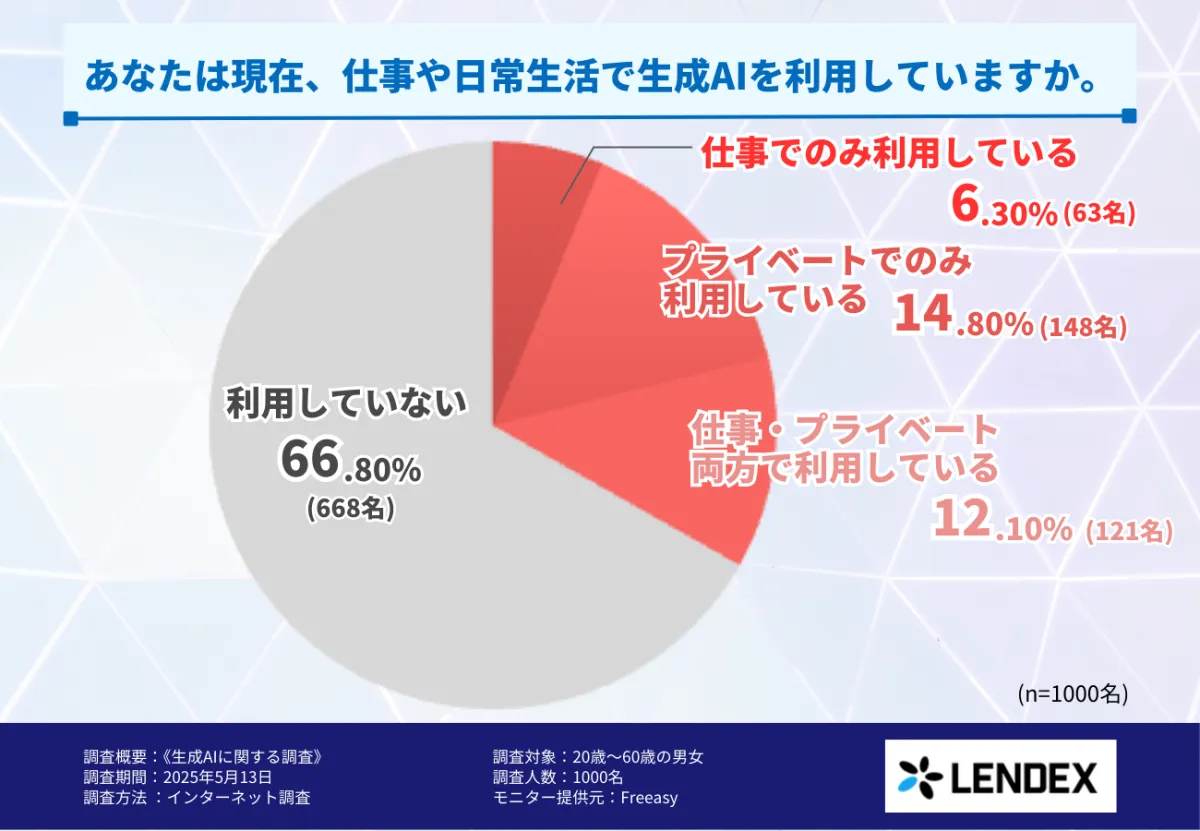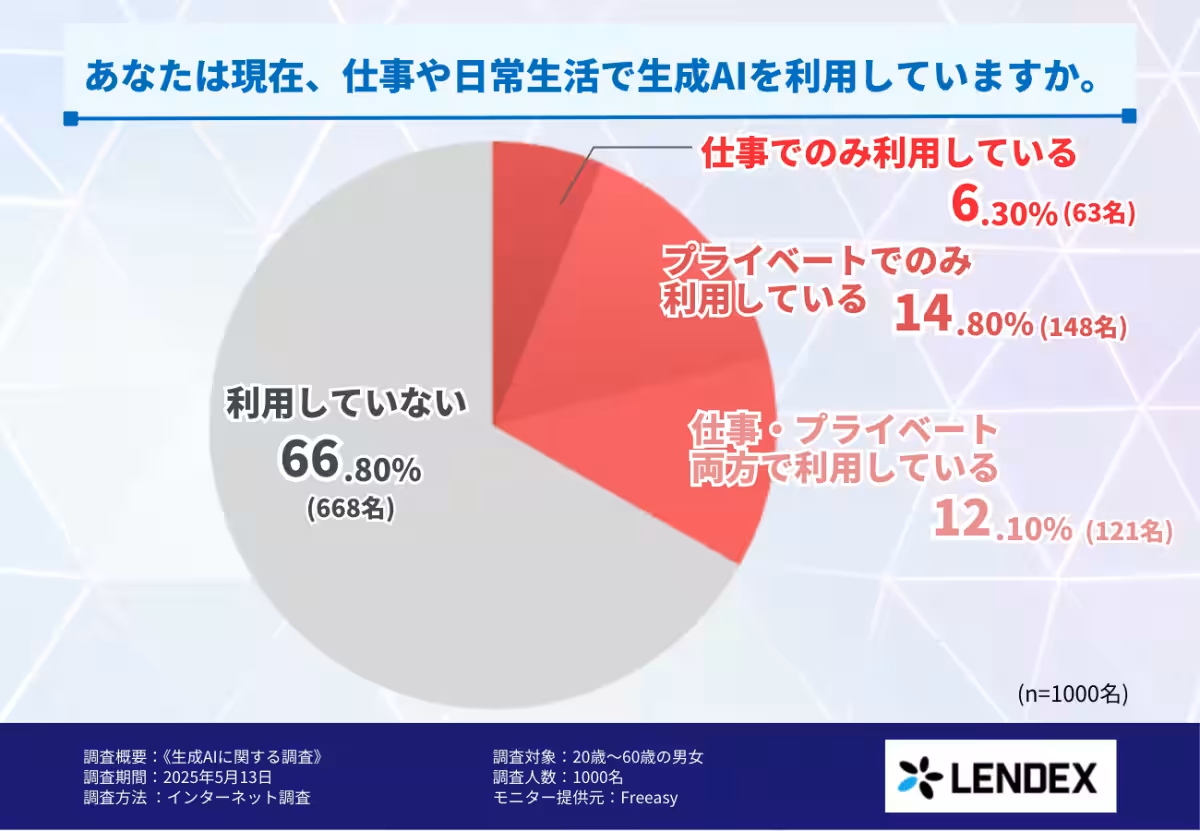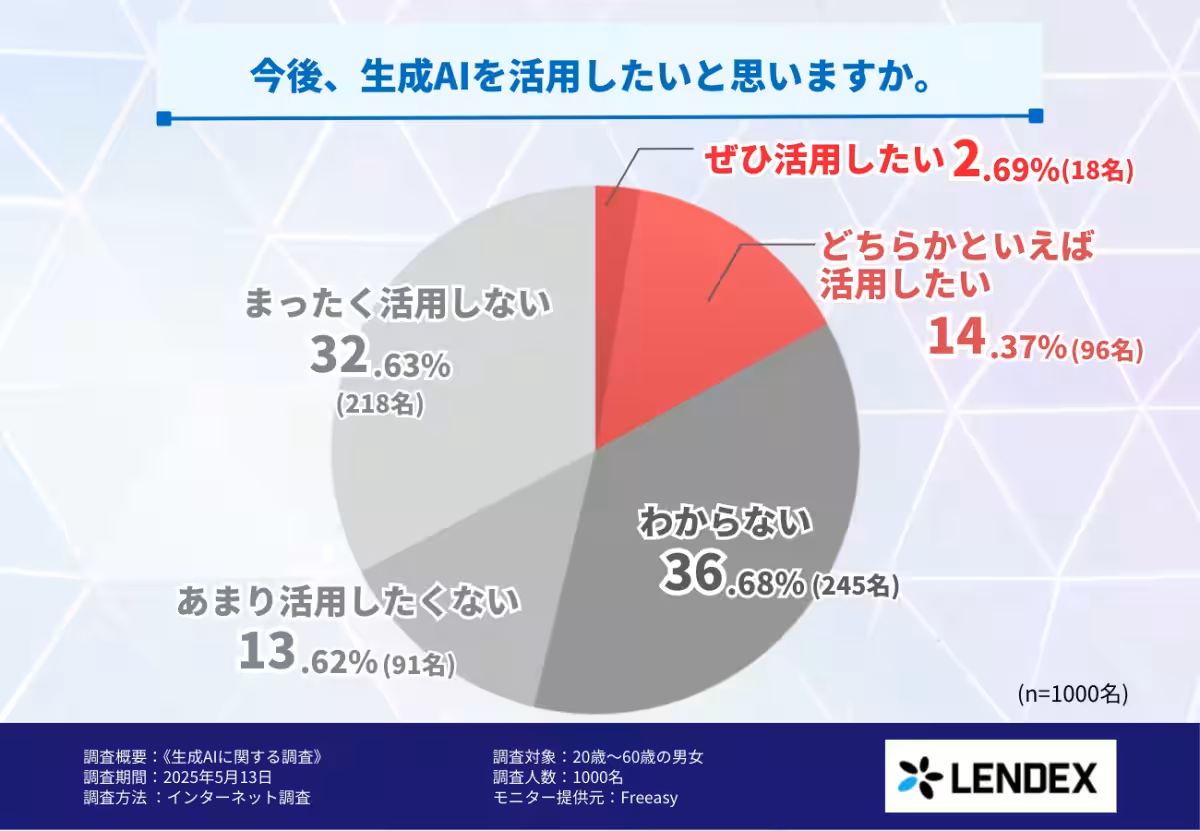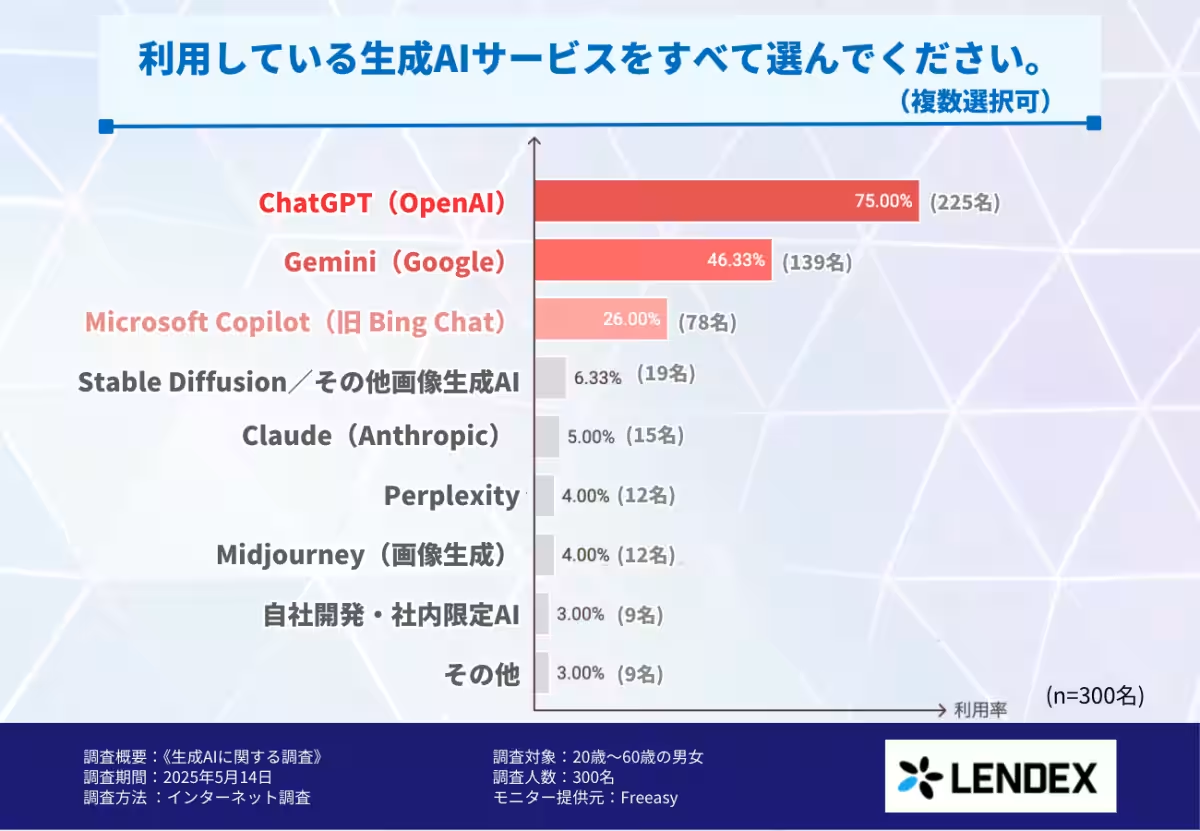

The Shocking AI Gap: 73% Satisfaction Yet 66% of Users Remain Unfamiliar
Exploring the AI Gap: Findings from LENDEX's Survey
In a recent survey conducted by LENDEX, a crowdfunding platform based in Shibuya, Tokyo, researchers examined the current state of generative AI usage among various age groups spanning from their twenties to sixties. The results revealed some striking insights into the evolving landscape of artificial intelligence utilization in everyday life.
By the year 2025, generative AI has seamlessly integrated into our daily activities, providing vast applications ranging from enhancing business efficiencies to supporting personal learning and creative endeavors. However, the survey results indicate that a significant portion of the population remains disengaged from this technology despite its growing presence and capabilities.
Key Survey Findings
The initial findings of the survey revealed that a staggering 66.8% of respondents have not yet utilized generative AI in any capacity. Only 33.2% reported using AI tools either for personal purposes or work-related tasks. Specifically, 14.8% admitted to using it solely for personal use, while 6.3% utilized it only for work, and 12.1% did both. The emerging insights are clear; while the advantages of generative AI are recognized by many, hesitations persist that prevent wider adoption among potential users.
Furthermore, the survey asked respondents about their future intentions regarding generative AI. Only 17.1% of individuals expressed a desire to actively engage with AI in the future, while a considerable 36.7% remain uncertain about using it altogether. This indicates that a large number of people are still navigating through confusion and skepticism regarding the applications of generative AI and its practical benefits in their lives.
Satisfaction Levels Among Users
Interestingly, those who have embraced generative AI express a high degree of satisfaction, with 73.0% of users indicating that they were pleased with their experiences. The primary platform utilized by these users is ChatGPT, which accounted for 75.0% of responses. Other notable platforms included Gemini at 46.3% and Microsoft Copilot at 26.0%. The primary uses cited for generative AI revolve around brainstorming ideas, conducting research, and drafting communication, including emails and chat messages.
Barriers to Adoption
A significant barrier to broader adoption has been identified as a lack of understanding regarding how to effectively utilize generative AI. Many respondents cited challenges such as an overwhelming amount of information and an inability to discern the best AI applications for their needs. These obstacles underscore the necessity for increased educational resources and clearer pathways into the world of generative AI.
The Potential Ahead
The analysis of the survey highlights a notable gap between those who are actively using generative AI and those who have yet to engage with it. Users proclaim its usefulness in practical scenarios, yet notable hesitancy looms over uninitiated individuals who grapple with uncertainties related to the capabilities of AI and how to get started.
Moreover, while ChatGPT remains the dominant platform, there are still emerging opportunities in fields such as image generation, video processing, and programming assistance. This indicates a promising future potential, as many still have yet to discover the capabilities that generative AI can provide.
In conclusion, the challenge lies not in the technology itself, but in providing tangible experiences that encourage broader adoption. As noted, initiatives such as interactive workshops, shared use cases, and smooth integration into existing workflows may promote user confidence and familiarity with AI technologies. Consequently, strengthening this initial step could lead to more extensive exploration and appreciation of generative AI, bridging the divide between satisfied users and those still experiencing the technology gap.
For a complete overview of the survey results surrounding the objectives and satisfaction of generative AI usage, be sure to visit the LENDEX blog.




Topics Consumer Technology)










【About Using Articles】
You can freely use the title and article content by linking to the page where the article is posted.
※ Images cannot be used.
【About Links】
Links are free to use.